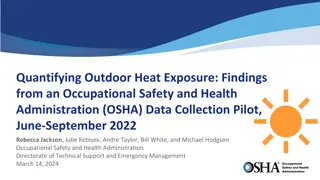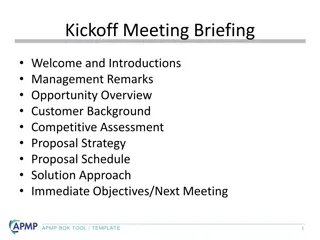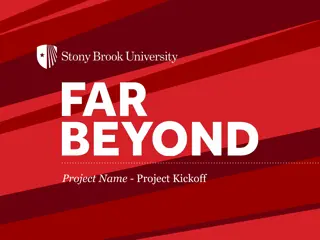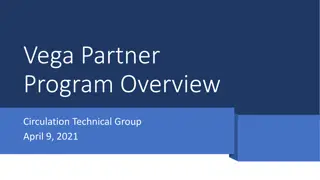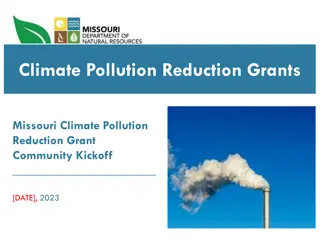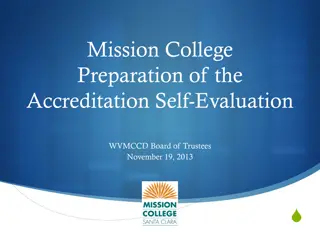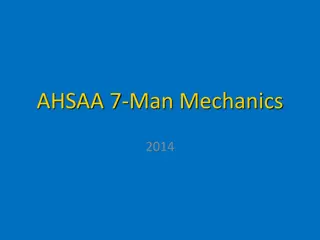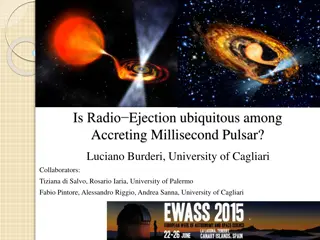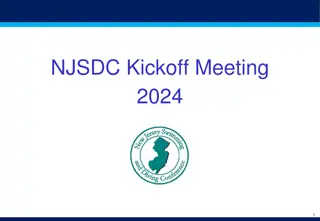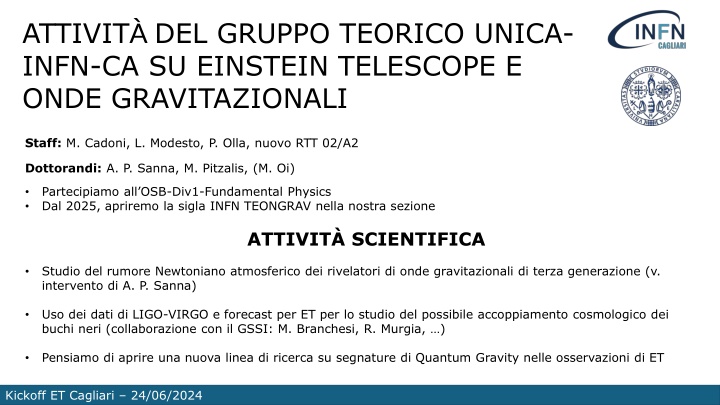
Enhancing Sensitivity of Gravitational-Wave Detectors: Atmospheric Noise Study
Explore the impacts of atmospheric noise on third-generation gravitational-wave detectors, aiming to refine the detection capabilities and compare against sensitivity curves. Learn how noise levels vary with factors like detector depth and wind speed. Discover insights on mitigating noise for optimal detector performance.
Uploaded on | 2 Views
Download Presentation

Please find below an Image/Link to download the presentation.
The content on the website is provided AS IS for your information and personal use only. It may not be sold, licensed, or shared on other websites without obtaining consent from the author. If you encounter any issues during the download, it is possible that the publisher has removed the file from their server.
You are allowed to download the files provided on this website for personal or commercial use, subject to the condition that they are used lawfully. All files are the property of their respective owners.
The content on the website is provided AS IS for your information and personal use only. It may not be sold, licensed, or shared on other websites without obtaining consent from the author.
E N D
Presentation Transcript
ATTIVIT DEL GRUPPO TEORICO UNICA- INFN-CA SU EINSTEIN TELESCOPE E ONDE GRAVITAZIONALI Staff: M. Cadoni, L. Modesto, P. Olla, nuovo RTT 02/A2 Dottorandi: A. P. Sanna, M. Pitzalis, (M. Oi) Partecipiamo all OSB-Div1-Fundamental Physics Dal 2025, apriremo la sigla INFN TEONGRAV nella nostra sezione ATTIVIT SCIENTIFICA Studio del rumore Newtoniano atmosferico dei rivelatori di onde gravitazionali di terza generazione (v. intervento di A. P. Sanna) Uso dei dati di LIGO-VIRGO e forecast per ET per lo studio del possibile accoppiamento cosmologico dei buchi neri (collaborazione con il GSSI: M. Branchesi, R. Murgia, ) Pensiamo di aprire una nuova linea di ricerca su segnature di Quantum Gravity nelle osservazioni di ET Kickoff ET Cagliari 24/06/2024
Atmospheric Newtonian noise modeling for third-generation gravitational-wave detectors Speaker: Andrea Pierfrancesco Sanna Based on: Phys. Rev. D 106 (2022) no. 6, 064040 In collaboration with: Davide Brundu, Mariano Cadoni, Piero Olla, Mauro Oi Kickoff ET Cagliari 24/06/2024
Motivations Third-generation gravitational-wave detectors are expected to enhance the sensitivity of a factor 10 and to push the frequency bandwidth down to 2-3 Hz The major limitations in this frequency band are expected to come from the Newtonian Noise [Saulson (1984)], [Harms (2019)] 1. Seismic Noise 2. Atmospheric Noise [Creighton (2013)] Main objective Improve the estimation of the atmospheric noise and compare it with the ET sensitivity curve Kickoff ET Cagliari 24/06/2024 1
Results ????? ln?3 Detector depth: 5 m ?0 Reference values of the roughness of the terrain Kickoff ET Cagliari 24/06/2024 2
Results ????? ln?3 ?0 Reference values of the roughness of the terrain Kickoff ET Cagliari 24/06/2024 3
Results ?0= 0.1, detector depth: 50 m For large values of the wind speed, the noise is only a factor ~5 ~5 below the sensitivity curve Kickoff ET Cagliari 24/06/2024 4
Results ?0= 0.1, ????= 30 ?/? For ?0= 50 ?, the noise is a factor ~10 ~10 below the sensitivity curve Passive Passive mitigation mitigation may insufficient insufficient! ! may be be Kickoff ET Cagliari 24/06/2024 5
Conclusions General features Noise is suppressed at large frequencies Noise is partially mitigated placing the detector underground Future perspectives More accurate modeling of atmospheric turbulence (our study provided only orders of magnitude estimates) Numerical simulations (atmospheric codes) are essential Measurements in situ of the temperature field Kickoff ET Cagliari 24/06/2024 6





